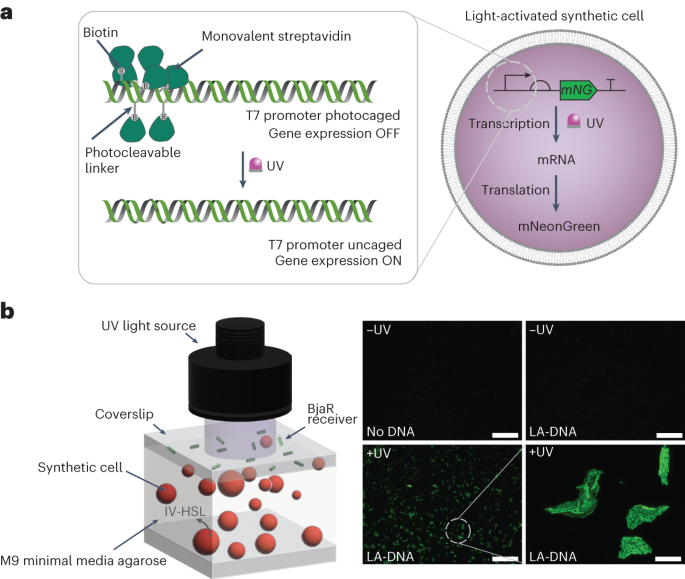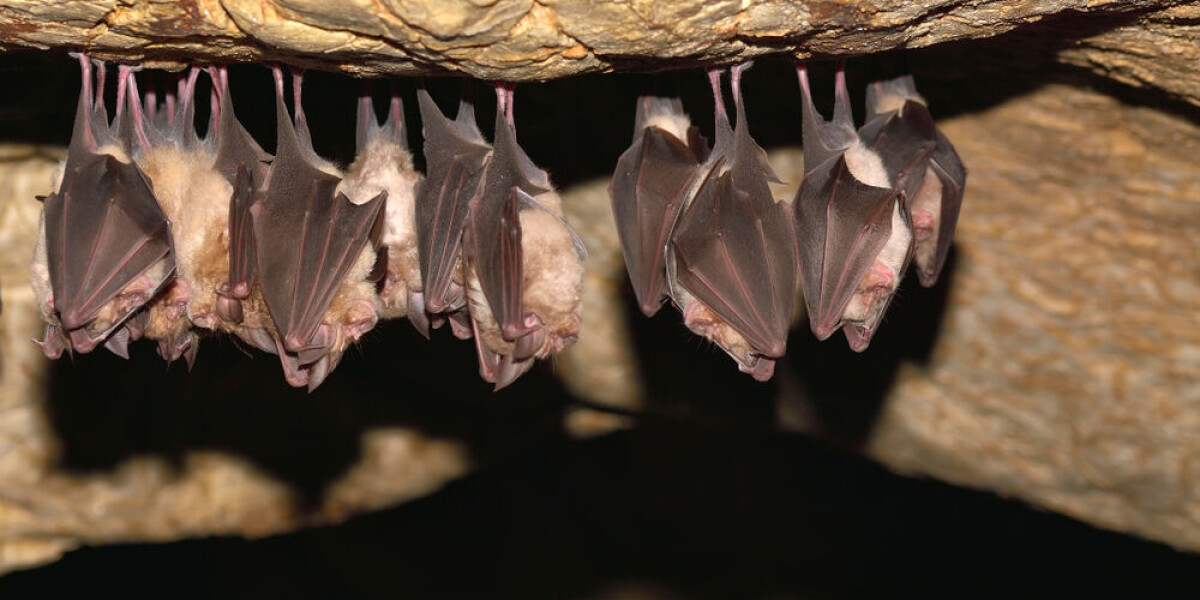
- Select a language for the TTS:
- UK English Female
- UK English Male
- US English Female
- US English Male
- Australian Female
- Australian Male
- Language selected: (auto detect) - EN
Play all audios:
Synthetic cells are modular gene-expressing compartments with promising applications in biology and medicine. However, a more diverse toolkit is needed to enhance their capabilities,
particularly in terms of controlling their gene expression and employing novel synthetic cell–to–living cell signaling pathways. In this work, photocaged promoters and cell-free synthesis of
the acyl homoserine lactone synthase BjaI were used to achieve light-activated communication between synthetic cells and living cells. Access through your institution Buy or subscribe This
is a preview of subscription content, access via your institution ACCESS OPTIONS Access through your institution Access Nature and 54 other Nature Portfolio journals Get Nature+, our
best-value online-access subscription $29.99 / 30 days cancel any time Learn more Subscribe to this journal Receive 12 print issues and online access $259.00 per year only $21.58 per issue
Learn more Buy this article * Purchase on SpringerLink * Instant access to full article PDF Buy now Prices may be subject to local taxes which are calculated during checkout ADDITIONAL
ACCESS OPTIONS: * Log in * Learn about institutional subscriptions * Read our FAQs * Contact customer support REFERENCES * Krinsky, N. et al. Synthetic cells synthesize therapeutic proteins
inside tumors. _Adv. Healthc. Mater._ 7, 1701163 (2017). THIS PAPER REPORTS THE GENERATION OF SYNTHETIC CELLS THAT CAN KILL NEIGHBORING CANCER CELLS. Article Google Scholar * Duhan
Toparlak, Ö. et al. Artificial cells drive neural differentiation. _Sci. Adv._ 6, eabb4920 (2020). THIS PAPER REPORTS THE GENERATION OF SYNTHETIC CELLS THAT CAN DRIVE NEURONAL
DIFFERENTIATION. Article PubMed PubMed Central Google Scholar * Smith, J. M. et al. Controlling synthetic cell-cell communication. _Front. Mol. Biosci._ 8, 809945 (2022). THIS REVIEW
ARTICLE DISCUSSES CURRENT METHODS FOR CONTROLLING SYNTHETIC CELLS AND FUTURE POSSIBILITIES. Article PubMed PubMed Central Google Scholar * Rampioni, G. et al. Gene-expressing liposomes
as synthetic cells for molecular communication studies. _Front. Bioeng. Biotechnol._ 7, 1 (2019). THIS REVIEW ARTICLE IS ON COMMUNICATION METHODS BETWEEN SYNTHETIC CELLS AND LIVING CELLS.
Article PubMed PubMed Central Google Scholar * Booth, M. J. et al. Light-activated communication in synthetic tissues. _Sci. Adv._ 2, 1600056 (2016). THIS PAPER REPORTS THE CREATION OF
LIGHT-ACTIVATED DNA TO TIGHTLY CONTROL CELL-FREE PROTEIN SYNTHESIS. Article Google Scholar Download references ADDITIONAL INFORMATION PUBLISHER’S NOTE Springer Nature remains neutral with
regard to jurisdictional claims in published maps and institutional affiliations. THIS IS A SUMMARY OF: Smith, J. M. et al. Engineering cellular communication between light-activated
synthetic cells and bacteria. _Nat. Chem. Biol_. https://doi.org/10.1038/s41589-023-01374-7 (2023). RIGHTS AND PERMISSIONS Reprints and permissions ABOUT THIS ARTICLE CITE THIS ARTICLE
Building light-activated synthetic cells that induce gene expression in bacteria via quorum sensing. _Nat Chem Biol_ 19, 1052–1053 (2023). https://doi.org/10.1038/s41589-023-01375-6 Download
citation * Published: 06 July 2023 * Issue Date: September 2023 * DOI: https://doi.org/10.1038/s41589-023-01375-6 SHARE THIS ARTICLE Anyone you share the following link with will be able to
read this content: Get shareable link Sorry, a shareable link is not currently available for this article. Copy to clipboard Provided by the Springer Nature SharedIt content-sharing
initiative








